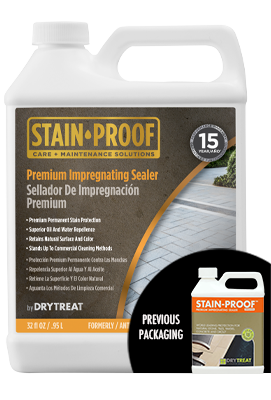Sandstone is a popular and versatile building material known for its natural beauty and durability. However, its porous nature and earthy tones may not always fit with your vision for a space. If you’re considering giving your sandstone surfaces a fresh look, you might be wondering, “Can you paint sandstone?” In this comprehensive guide, we’ll explore the feasibility, techniques, and considerations involved in painting sandstone, ensuring you make an informed decision for your project.
Understanding Sandstone and Its Properties
What is Sandstone?

Sandstone is a sedimentary rock composed primarily of sand-sized mineral particles, such as quartz or feldspar. It forms through the accumulation and cementation of sand grains over time. The rock is known for its varied colors, from earthy reds and browns to soft grays and beige. Its natural texture and colour make it a favored material for building and landscaping.
Characteristics of Sandstone
-
- Porosity: Painting Sandstone is highly porous, which means it can absorb water and other substances. This characteristic affects how well it adheres to paint and how the paint performs over time.
-
- Texture: The surface texture of painting sandstone can vary from smooth to rough, influencing how paint adheres and appears once applied.
-
- Natural Variation: Sandstone’s colour and texture can vary significantly, even within the same slab. This natural variation can impact the final appearance of painted surfaces.
Can You Paint Sandstone?
Yes, painting sandstone, but it requires careful preparation and consideration. Painting sandstone can enhance its appearance, protect it from the elements, and allow you to achieve a desired aesthetic. However, due to its porous nature, painting sandstone requires specific techniques and materials to ensure a successful and long-lasting finish.
Why Paint Sandstone?
Aesthetic Changes
Painting sandstone allows you to change the colour and appearance of the stone, matching it to your desired style or design theme. Whether you want a sleek, modern look or a bold, vibrant color, painting provides flexibility in achieving your vision.
Protection
Applying a high-quality paint or sealant can protect sandstone from environmental damage, such as weathering, UV rays, and staining. This added protection helps maintain the stone’s integrity and prolongs its lifespan.
Maintenance
Painted sandstone surfaces can be easier to clean and maintain compared to unpainted ones. A painted finish can make it simpler to remove dirt, grime, and stains, keeping your surfaces looking fresh and vibrant.
Preparation Before Painting Sandstone
1. Cleaning the Sandstone
Before you start painting, it’s essential to thoroughly clean the sandstone surface. This step ensures that any dirt, dust, or loose particles are removed, allowing the paint to adhere properly.
-
- Remove Debris: Use a broom or brush to sweep away loose dirt and debris from the surface.
-
- Wash the Surface: Use a mild detergent mixed with water to wash the sandstone. Scrub with a soft-bristled brush to remove stubborn dirt and stains. Rinse thoroughly with clean water and let the surface dry completely.
2. Repairing the Surface
Inspect the sandstone for any cracks, chips, or damage. Repair these imperfections before painting to ensure a smooth and even finish.
-
- Fill Cracks and Chips: Use a suitable filler or mortar designed for sandstone. Apply it with a putty knife, smooth it out, and allow it to cure according to the manufacturer’s instructions.
3. Sanding
For a smoother finish and better paint adhesion, lightly sand the sandstone surface. This step helps to create a rough texture that allows the primer and paint to bond more effectively.
-
- Choose the Right Grit: Use a medium-grit sandpaper (around 120-grit) for sanding.
-
- Sand Evenly: Sand the entire surface to create an even texture. Wipe away any dust with a damp cloth after sanding.
4. Applying a Primer

Applying a primer is crucial when painting sandstone. A primer helps seal the porous surface, providing a stable base for the paint and enhancing adhesion.
-
- Select a Suitable Primer: Choose a primer designed for porous surfaces, such as masonry or concrete primer.
-
- Apply the Primer: Use a paintbrush or roller to apply a coat of primer evenly across the sandstone surface. Allow it to dry completely before proceeding to paint.
Choosing the Right Paint
1. Paint Type
The type of paint you choose for sandstone significantly impacts the final result. There are several options to consider:
-
- Acrylic Paint: Water-based acrylic paints are popular for exterior and interior applications due to their durability and ease of use. They are resistant to fading and provide a flexible finish that can expand and contract with the sandstone.
-
- Latex Paint: Latex paint is another good option for sandstone. It offers similar benefits to acrylic paint, including easy cleanup and flexibility.
-
- Masonry Paint: Specifically designed for masonry surfaces, this type of paint provides excellent adhesion and durability. It’s ideal for sandstone, as it is formulated to handle the unique challenges of porous surfaces.
2. Paint Finish
The finish of the paint affects both appearance and functionality. Common finishes include:
-
- Matte/Flat: Provides a non-reflective finish, hiding imperfections but may require more frequent touch-ups.
-
- Satin: Offers a subtle sheen that is easier to clean and more durable than matte finishes.
-
- Glossy: Provides a high-shine finish that is highly durable and resistant to stains, but can highlight imperfections.
Painting Techniques for Sandstone
1. Applying the Paint
Once the primer has dried, you can start painting. Use the appropriate tools and techniques to ensure a smooth and even application.
-
- Use the Right Tools: Choose high-quality brushes or rollers suitable for your paint type. For detailed areas, use a smaller brush, while a larger roller works well for broader surfaces.
-
- Apply in Thin Coats: Apply the paint in thin, even coats to avoid drips and ensure better adhesion. Allow each coat to dry completely before applying additional layers.
2. Blending and Touch-Ups
After the initial coats are dry, inspect the surface for any uneven areas or touch-ups needed. Blend in any inconsistencies and apply additional paint if necessary.
-
- Blending: Use a brush or roller to blend any touch-ups with the surrounding paint for a seamless finish.
-
- Final Inspection: Check for any missed spots or areas that need additional coverage. Apply a final coat if needed and allow it to dry completely.
Maintaining Painted Sandstone
To keep your painted sandstone looking fresh, establish a regular cleaning routine. Use a mild detergent and water to clean the surface, avoiding harsh chemicals that could damage the paint.
-
- Clean Gently: Use a soft cloth or sponge to clean the surface. Avoid abrasive scrubbers that could scratch the paint.
2. Touch-Up and Repair
Over time, painted surfaces may experience wear and tear. Address any chips, scratches, or peeling paint promptly to maintain the appearance and protection of the surface.
-
- Touch-Up Paint: Keep some of the original paint on hand for touch-ups. Apply it carefully to affected areas and blend it with the surrounding paint.
3. Re-Sealing
Depending on the type of paint and the conditions the sandstone is exposed to, you may need to reapply a sealant periodically to maintain the paint’s effectiveness and longevity.
-
- Choose a Suitable Sealant: Use a sealant compatible with your paint type and designed for porous surfaces.
-
- Reapply as Needed: Follow the manufacturer’s instructions for reapplying sealant and maintaining the painted finish.
Common Challenges and Solutions
1. Paint Peeling or Blistering
Peeling or blistering can occur if the paint does not adhere properly to the sandstone. This issue is often due to insufficient surface preparation or applying paint over a damp surface.
-
- Solution: Ensure thorough cleaning and drying before painting. Use a high-quality primer and allow it to dry completely. Apply paint in thin, even coats.
2. Colour Inconsistencies
Sandstone’s natural variation can sometimes result in uneven colour application, especially if the surface was not uniformly prepared.
-
- Solution: Ensure even sanding and priming to minimize colour inconsistencies. Apply multiple thin coats of paint to achieve a consistent finish.
3. Fading or Discoloration
Painted sandstone exposed to harsh weather conditions may experience fading or discoloration over time.
-
- Solution: Choose paint formulated for exterior use with UV protection. Reapply paint or sealant as needed to maintain colour and appearance.
Conclusion
Painting sandstone can be a great way to refresh its look to make your sandstone landscaping more appealing, enhance its protection, and better match it to your design vision. However, it requires careful preparation, the right materials, and proper techniques to achieve a successful and lasting finish. By understanding the properties of sandstone, selecting suitable paint and primer, and following the appropriate painting techniques, you can transform your sandstone surfaces with confidence. Whether you’re updating an old surface or adding a new design element to your space, painting sandstone can offer a beautiful and functional solution to meet your needs.



